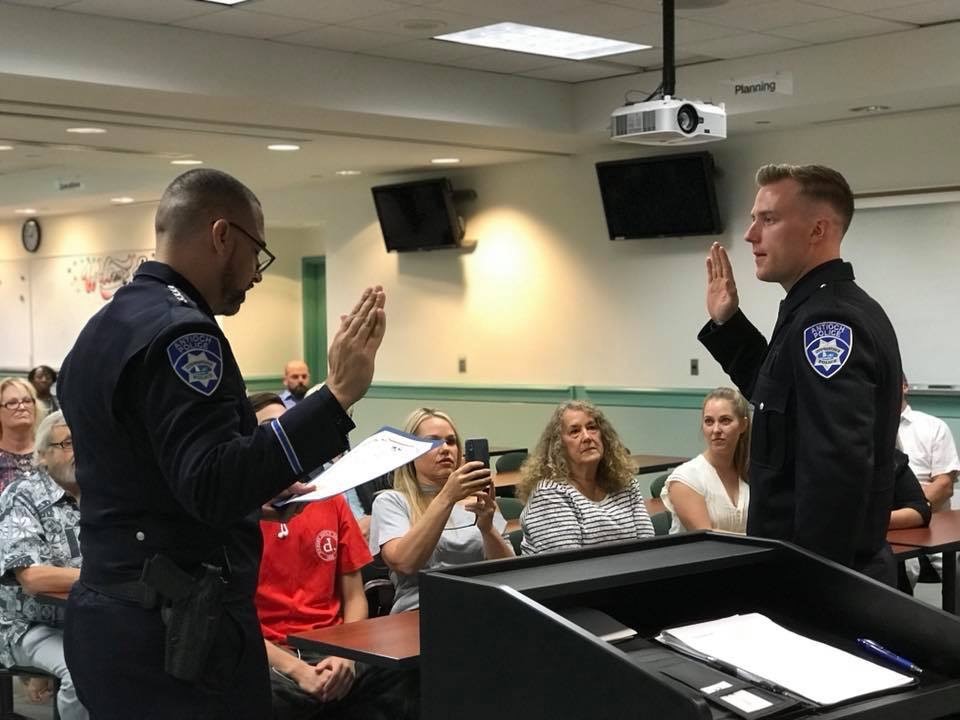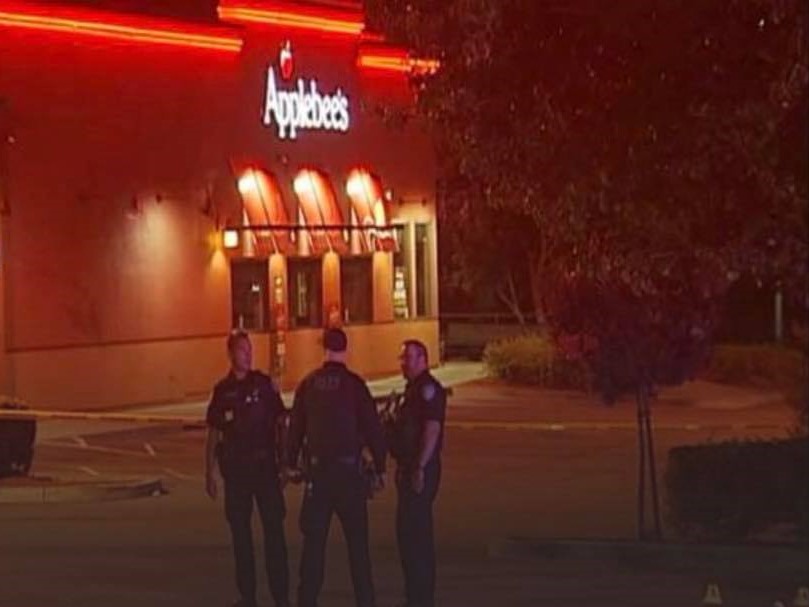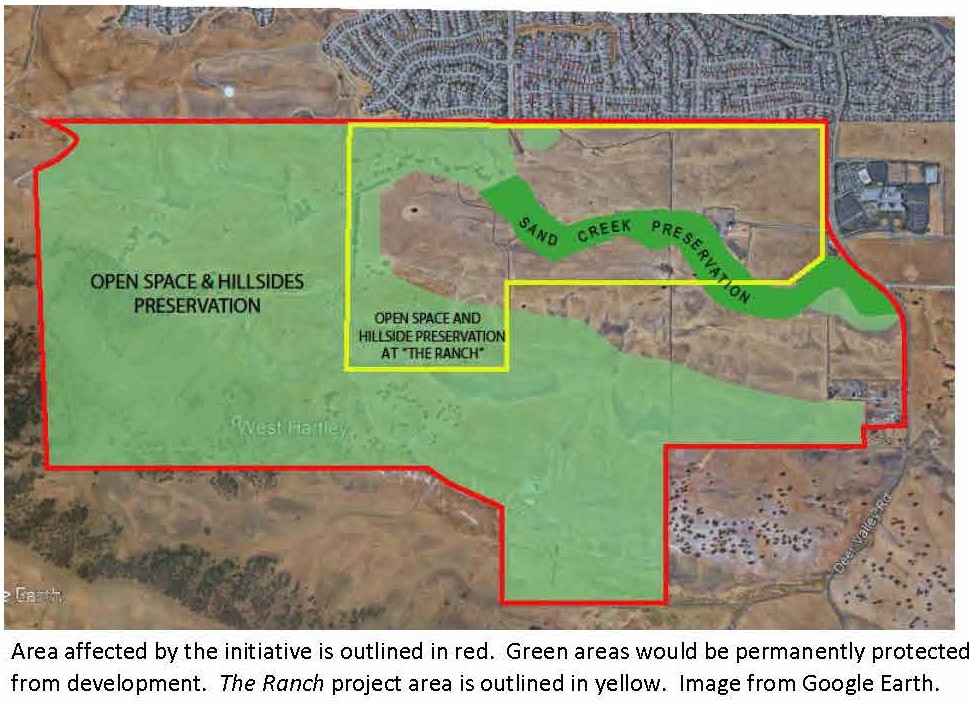
Map of the area included in the environmental groups’ initiative showing projects already approved and The Ranch and Zeka Ranch projects they’ were working to stop.
Claim the two initiatives were the same; defend providing false information to voters; want council to adopt not “Let Antioch Voters Decide” their initiative
Following is an email message sent out Thursday by the Antioch Community to Save Sand Creek whose “Let Antioch Voters Decide: the Sand Creek Area Protection Initiative”, backed by environmental groups, was not placed on the November 2018 ballot by the Antioch City Council as the backers wanted. Instead, the council voted unanimously to adopt the competing initiative by Richland Communities which approved their 1,177-home development, known as “The Ranch” and postponed dealing with the environmental groups’ initiative for 30 days, delaying its appearance on the ballot until March 2020. (See related article).
Email message:
City Council Adopts Richland Developer Initiative, Orders 30-day Study on Our Let Antioch Voters Decide Initiative
Council Can Adopt Our Initiative on Tuesday August 28th (7pm; 200 H St)
This past Tuesday night, with many members of Antioch Community to Save Sand Creek, in attendance, the City Council adopted the initiative backed by Richland developers and ordered a 30-day study on ours.
What Does This Mean?
In short, three things:
1) more than 1,200 acres of beautiful Antioch scenery, endangered species habitat and creek corridor west of Deer Valley Rd have increased protection,
2) ‘The Ranch’ project (about 1,200 units) is now approved, unless challenged in the next 30 days, and
3) Antioch voters will get to decide if they want any more development west of Deer Valley Rd besides the development envelope associated with ‘The Ranch’.
This Is A Major Indirect Victory! But How, if the Developers Got Their Initiative Adopted?
To understand that, first know that the developers would never have done their initiative if we had not drafted, filed, and collected signatures for our own initiative.
Recognizing they had made a major blunder in not taking us seriously and realizing they had to make some major changes, they basically copied our initiative with one major change: allow an improved version of their project.
They changed their project to reduce the number of units, provide a wide creek-corridor buffer around Sand Creek, leave the hills alone and buffer Empire Mine Rd so their project doesn’t lead to more development further west.
So right now, an improved (as described above) ‘The Ranch’ project has been approved, and about 70% of the Sand Creek area west of Deer Valley Rd has development restricted on it. That includes the Zeka Ranch, which is more than 640 acres west of Empire Mine Rd that is surrounded on three sides by East Bay Regional Park District land, the southern hills and Sand Creek.
What Happens With Our Initiative?
On Tuesday the Council ordered a 30-day report, also known as a 9212 Report (from the Elections Code) on our Initiative. It’s a purely informational report that basically describes how our Initiative would affect the City’s General Plan, if at all.
Our Let Antioch Voters Decide: the Sand Creek Area Protection Initiative, will be taken up again by the City Council on Tuesday August 28th.
They will have two options: 1) Adopt it, or 2) put it on the 2020 ballot.
Since the Richland initiative has a built-in development agreement that takes effect after 30 days, and it was adopted on Tuesday, the Council adopting our Initiative on August 28th wouldn’t affect the approval of ‘The Ranch’.
We want them to adopt our Let Antioch Voters Decide Initiative. It would save the City the expense of having to put it on the ballot and add protections to the Sand Creek Area.
Addressing Council’s Criticism of Antioch Community to Save Sand Creek Member Organizations
During the discussion of our Initiative by the Council on Tuesday there was a lot of criticism lobbed at Antioch Community to Save Sand Creek members, specifically Save Mount Diablo. Much was made of Councilmembers’ experience that signature gatherers told Antioch residents that there could be 4,000-8,000+ houses approved in the Sand Creek area, and in some cases 50,000 new houses in Antioch overall. The Council thought these were false and misleading claims. There was also criticism related to a member organization, Greenbelt Alliance, not sending a representative to the meeting that night.
We want to address these claims directly. The below paragraph is from our Frequently Asked Questions sheet, which from the very beginning we made available digitally and in hard-copy.
Amount of Possible Housing Stated To Public – 4,000-8,000 Units
Before our Initiative, more recent planning attempts and the City’s current General Plan suggested 4,000 units in the Sand Creek Area. But, for each project so far, the city council has amended the General Plan to allow even more houses. The Sand Creek Focus Area includes 2,783 acres. The approved Aviano and Promenade projects east of Deer Valley Rd include 1,183 houses on 281 acres east of Kaiser. There are two other active development applications: At the time, ‘The Ranch’ proposed 1,307 on 552 acres. ‘Olive Grove’ east of Deer Valley Rd proposes 301 units on 97 acres. In total that’s 2,791 units on 930 acres, just a third of the total acreage. If the city continued to ignore the General Plan at the same pace, that equals 8,352 units on 2,783 acres. So we used a range of 4,000 units suggested in the General Plan and 8,000, suggested by what’s actually taking place.
Paid Signature Gatherers – 50,000 Houses?
As for the 50,000 house claim, Tuesday was the first we’ve heard of it. This is a good point to bring up the fact that about 85% of the official signatures we collected to qualify our Initiative for the ballot were collected by volunteers and staff from member organizations. They were informed about 4,000-8,000 range and communicated this to the public. Towards the end of the signature drive, it became necessary to use paid signature gatherers to get over the last signature hurdle. It’s possible that some of these individuals inflated numbers in the hopes it would yield more signatures, but we hope this was not the case.
Richland’s 50+ Paid Signature Gatherers Confused The Situation
We noted that on Tuesday the Council publicly criticized what they called the misleading claims of some of our signature gatherers, while saying nothing about the Richland initiative, which unlike us, relied entirely on paid signature gatherers. We agree that we witnessed paid signature gatherers saying whatever they thought would get someone to stop and sign.
Deal Between Save Mount Diablo and Richland?
One Councilmember suggested there was a deal between Save Mount Diablo and Richland. In fact, the Let Antioch Voters Decide initiative is sponsored by a coalition of organizations and individuals. Save Mount Diablo is one member of the coalition, but certainly a significant one. We have had discussions, tours and all kinds of conversations with Richland for over 3 years before we drafted our initiative, in hopes they would make their project better. By the same token, we’ve had conversations about the same issues with every city council member. In our opinion, they didn’t make their project better and so we drafted our initiative.
After our initiative was filed we continued meeting with Richland (and separately with every city council member), hoping at the simplest to keep them from going nuclear on our volunteer signature gatherers for as long as possible. Our efforts are always toward the best conservation outcome we can achieve. During the signature drive, we submitted comments on Richland’s The Ranch project Environmental Impact Report—and the city slowed down the environmental review. When Richland began qualifying a competing initiative, they clearly copied much of the substance of our own initiative, hoping we would not oppose theirs. They also changed their project, making it smaller and including many of the suggestions the public and Save Mount Diablo had made over the previous 3 years. That made things a lot more complicated.
We had plenty of discussions with Richland, but the only deal we had was that neither of us would legally challenge the others’ initiative. Each initiative sponsor would continue pursuing their initiative’s qualification and attempts at getting the City Council to adopt our measures.
Greenbelt Alliance
And finally, regarding the absence of a Greenbelt Alliance representative at the meeting on Tuesday, Greenbelt Alliance is a highly valued partner. The East Bay Field Representative position is currently vacant. Greenbelt Alliance is facing a very high workload with less staff than they normally would have available. Having communicated directly with Greenbelt Alliance, we can confirm that their absence on Tuesday was simply a bandwidth issue and in no way related to any disagreement or controversy related to the Initiative.
Moving On
We hope this puts to rest any questions, concerns or accusations that the Council or anyone in the Antioch community has regarding Antioch Community to Save Sand Creek member organizations, specifically Greenbelt Alliance and Save Mount Diablo. We look forward to constructive relationships in the future with not just the City Council, but all people in Antioch. After all, we still have work to do next month.
Our Next Step Is…Ask Council to Adopt Our Initiative on Tuesday August 28 (7pm; 200 H St)
Please come to the meeting, fill out a speaker card and ask the Council to adopt the ‘Let Antioch Voters Decide: Sand Creek Area Protection Initiative’. If you can’t be there in person, call or email the City Council (list below) and ask them to adopt the Let Antioch Voters Decide Initiative.
Hundreds of volunteers and thousands of Antioch residents who signed helped us get this far. Let’s make the next step a reality!
Antioch City Council Contact Info:
Mayor Sean Wright
(925) 757-3309 – swright@ci.antioch.ca.us
Mayor Pro Tem Lamar Thorpe
(925) 978-4663 – lthorpe@ci.antioch.ca.us
Council Member Lori Ogorchock
(925) 628-7764 – logorchock@ci.antioch.ca.us
Council Member Monica E. Wilson
(925) 628-0749 – mwilson@ci.antioch.ca.us
Council Member Tony G. Tiscareno
(925) 234-3639 – ttiscareno@ci.antioch.ca.us
THANK YOU!!!
Who We Are
A coalition of Antioch residents and environmental groups, including Save Mount Diablo, California Native Plant Society, Greenbelt Alliance and Sierra Club. We want to keep our community informed about what’s going on. You can unsubscribe from these messages at any time (below). But if you want to influence things and take action, you should join us. Thanks!
— End of email message.
 Central & East Contra Costa County CEASEFIRE is a partnership among community members, law enforcement and service providers that works to reduce gun violence in our communities of ANTIOCH, BRENTWOOD, CONCORD, OAKLEY & PITTSBURG. Part of its strategy is to link people who are at risk to services that help them make smart decisions.
Central & East Contra Costa County CEASEFIRE is a partnership among community members, law enforcement and service providers that works to reduce gun violence in our communities of ANTIOCH, BRENTWOOD, CONCORD, OAKLEY & PITTSBURG. Part of its strategy is to link people who are at risk to services that help them make smart decisions. If you would like to participate in the planning of CEASEFIRE events, please join us every Thursday evening at 6:30 pm at Renewed Strength Ministries – 2026 Cavallo Rd., Antioch.
If you would like to participate in the planning of CEASEFIRE events, please join us every Thursday evening at 6:30 pm at Renewed Strength Ministries – 2026 Cavallo Rd., Antioch.












 Council wants to split revenue with 80% going for police services
Council wants to split revenue with 80% going for police services Antioch ranks 21st for murders; Richmond ranks 6th overall, 5th for murders; Pittsburg ranks 59th overall, 13th for murders; Concord ranks 82nd overall, 87th for murders
Antioch ranks 21st for murders; Richmond ranks 6th overall, 5th for murders; Pittsburg ranks 59th overall, 13th for murders; Concord ranks 82nd overall, 87th for murders Most Dangerous Cities in California and Contra Costa County
Most Dangerous Cities in California and Contra Costa County Dear Editor:
Dear Editor:











